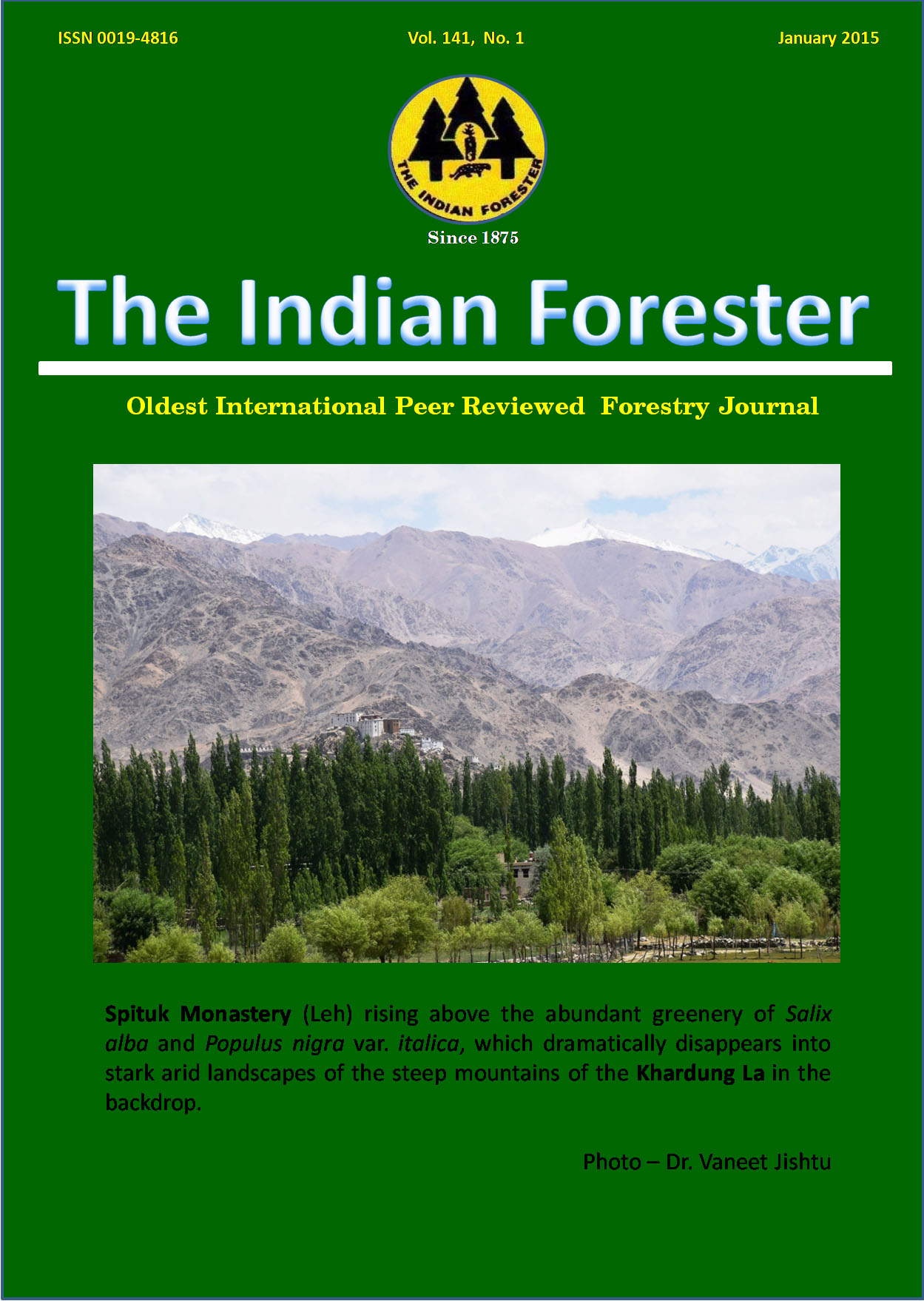Implementing REDD+ as a Climate Mitigation Option in India
DOI:
https://doi.org/10.36808/if/2015/v141i1/56813Keywords:
Climate Change, Redd , Carbon Stocks, Safeguards, Mrv, Forest Governance.Abstract
Reducing emissions from deforestation and degradation, along with conservation and sustainable management of forests, known as REDD+ is recognized as an innovative climate mitigation option for incentivizing local communities. India has contributed a lot to this process in international negotiations. However now, the mechanism needs to be implemented at national, state and local levels. Country should be ready with national strategy and action plan and like various other countries pilot projects could be started in different parts of the country to draw lessons for full-fledged implementation of REDD+. Deforestation is not much of the problem in the country. So focused efforts should be made for addressing the drivers of degradation and for conservation and sustainable management of forests in the country. Enough potential exists for enhancement of forest carbon stocks in various kinds of forests, in trees outside forests in both urban and rural landscapes, and in coastal areas. This needs to be harnessed with the help of a huge network of JFM communities in the country. India has developed tremendous capabilities in use of remote sensing, which can be utilized for development of reference levels and carrying out measurement, reporting and verification of carbon stocks. However, capacity needs to be built at state and community levels for mainstreaming REDD+ at all levels in the country.References
Angelson A. (ed). (2009) Realising REDD+ - National strategy and policy options. Centre for International Forestry Research, Indonesia. pp. 6-18
CBD (2012) Analysis of possible indicators to measure impacts of REDD+ on biodiversity and on indigenous and local communities. Subsidiary body on scientific, technical and technological advice, Convention on Biodiversity, Montreal. pp. 2-6
CFM (2012) SFM and the multiple functions of forests. Collaborative Partnership on Forests.pp. 1-4
Danielsen F., Skutsch M., Burgess N.D., Jensen P.M., Andrianandrasana H., Karky B., Lewis R., Lovett J.C., Massoa J., Ngaga Y., Phartyal P., Poulsen M.K., Singh S.P., Solis S., Sorensen M., Tewari A. and Yound R. (2011) At the Heart of REDD+: A role for local people in monitoring forests? Conservation letters 00 1-10
FSI (2013) India State of the Forest Report 2013. Forest Survey of India, Ministry of Environment and Forests, Government of India, Dehradun
ICFRE (2012). Forest Sector Report of India 2010. Directorate of Extension, Indian Council of Forestry Research and Education, Dehradun.
Kishwan J, Pande R. and Dadwal V.K. (2009), India's Forest and Tree Cover: Contribution As a Carbon Sink, Technical Paper No 130 ICFRE Bl-23
MoEF (2010) National mission for a green India. Draft Mission Document Ver 1.0. Ministry of Environment and Forests, Government of India, New Delhi. pp. 1-37
Planning Commission (2014) The Final Report of the Expert Group on Low Carbon Strategies for Inclusive Growth, Planning Commission Government of India
RECOFTC (2012) A training of trainer's manual for REDD+ for national and sub national facilitators. The Centre for People and Forests, Bangkok. pp. 4-40
Richards J.F. and Flint E.P. (1994). Historic land use and carbon estimates for South and Southeast Asia 1880–1980. ORNL/CDIAC-61, NDP-046, Oak Ridge National Laboratory, Tennessee, USA.
Skutsch M (ed) 2010. Community forest monitoring for the carbon market. Earthscan, London.
UNFCCC (2010) Report of the Conference of the Parties on its fifteenth session, held in Copenhagen from 7 to 19 December 2009. Doc No. FCCC/CP/2009/11/Add.1 dated 30 March 2010
UNFCCC (2011a) Report of the Conference of the Parties on its sixteenth session, held in Cancun from 29 November to 10 December 2010, Doc No. FCCC/CP/2010/7/Add.1 dated 15 March 2011
UNFCCC (2011b) India: Views on implementing COP decisions on 'Reducing emissions from deforestation and forest degradation in developing countries; and the role of conservation, sustainable management of forests and enhancement of forest carbon stocks in developing countries' (REDD-plus), submission to SBSTA available at: <http://unfccc.int/files/documentation/submissions_from_parties/application/pdf/india_submission_reddplus-strategy.pdf>
UNFCCC (2012) Financing options for the full implementation of results basedactions relating to the activities referred to indecision 1/CP.16, paragraph 70, including related modalities and procedures. UNFCCC, Bonn.pp 1- 17
UN-REDD (2012) UN-REDD programme guidelines for free, prior and informed consent. United Nations REDD Programme, Geneva. pp 4-8
WWF (2011) Capacity building materials on REDD+ for indigenous people and local communities. World wide fund for nature, Washington D.C. pp. 1-8.
Downloads
Downloads
Published
How to Cite
Issue
Section
License
Unless otherwise stated, copyright or similar rights in all materials presented on the site, including graphical images, are owned by Indian Forester.





